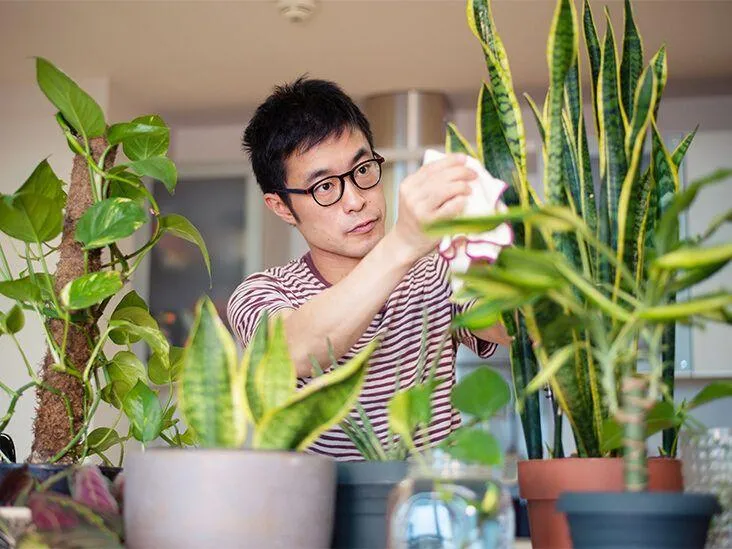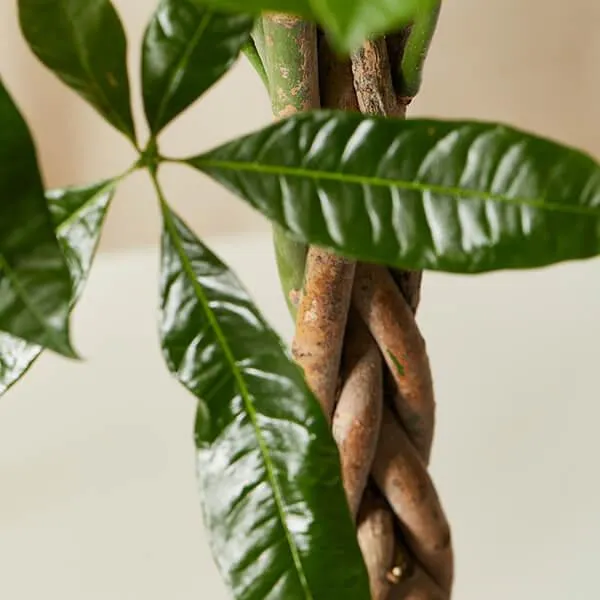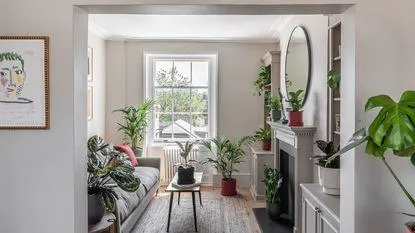A Guide to Choosing and Caring for Indoor Tree Plants
If you’re searching for “indoor tree plant,” you’re likely looking to add some tree-like greenery to your home. But with so many options, it can be tough to decide which type of indoor tree is right for your space and lifestyle. In this article, I’ll explain the key factors to consider when selecting an indoor tree plant and provide care tips to keep your new leafy friend healthy and happy for years to come.
Choosing the Right Indoor Tree Plant for Your Home
The first step is assessing your home’s growing conditions. Indoor trees have different light and water requirements, so you’ll want to pick one that suits your environment.
Light Needs
Indoor trees can tolerate low, medium, or high light. Low-light trees like snake plant or bamboo palm are great for offices or north-facing rooms. Medium-light trees like fiddle-leaf fig or dracaena thrive in bright indirect light near windows. High-light trees such as Norfolk Island pine need lots of direct sun, so reserve them for sunrooms. Take note of any shady spots in your home before choosing to avoid disappointing leaf drop.
Water Requirements
Some indoor trees like humidity more than others. Trees that evolved in tropical climates like ficus or Chinese evergreen enjoy moist soil. Desert trees like jade plant are drought-tolerant and don’t need frequent watering. Err on the side of less water if you’re unsure, as overwatering is a common indoor tree killer. Stick your finger in the soil to check moisture level before watering.

Size Constraints
Consider a tree’s mature size. A palm or fig tree may outgrow a small apartment over time. Dwarf varieties offer compact styles. For tight spaces, try bonsai trees, which are miniaturized through pruning. Place trees with room to grow. Be prepared to transplant upsized trees to avoid rootbound issues.
Safety Concerns
Some indoor trees like Norfolk Island pine or dieffenbachia are toxic to pets and children if ingested. Steer clear of these if small children or pets will be in contact. Opt instead for non-toxic trees like rubber plant, bamboo palm, or snake plant for households with little ones.
From my experience as an avid indoor gardener, it’s important to thoroughly research any tree before bringing it home to avoidcompatibility problems down the road. Now that you’ve narrowed your options, let’s discuss indoor tree care.
Caring for Your Indoor Tree Plant
Watering
As a rule of thumb, water when the top inch of soil is dry. Feel the soil with your finger before watering. For trees in small pots, water weekly in summer and every 2-3 weeks in winter. For larger trees in heavy clay pots, water less frequently, like every 10-14 days. Water thoroughly until water drains from the bottom and discard excess in the saucer.

Fertilizing
In the growing season (spring-fall), use a diluted liquid houseplant fertilizer monthly. Follow package directions, as overfertilizing can damage roots. During the winter when trees are not actively growing, cut back on fertilizer. Apply it only every couple months or skip entirely if growth is slow.
Repotting
Repot trees about every 2 years or when roots fill the container and emerge from the drainage holes. Use a pot just 1-2 inches wider for seamless transitions. Always remove old soil and inspect roots for pests or rootbound issues before repotting in fresh potting mix.
Pruning
Prune leggy trees in spring to encourage bushy growth. Cut branches back toleaf joints or new pairs of leaves. Trim yellow or damaged foliage any time. Pops of new leaves should emerge within weeks. Some indoor trees like Norfolk Island pine benefit from annual pruning to maintain shape.
Pests and Diseases
Check trees regularly, especially new acquisitions, for signs of common indoor tree issues. Watch out for pests like spider mites, scale, or mealybugs along stems and undersides of leaves. Address infestations promptly before they spread. Treat fungal or bacterial leaf spot diseases by pruning away damaged foliage and upping air circulation.

Location
Place trees where you’ll enjoy their natural appeal! Near windows provides sunlight and easy access to water when soil is dry. Rotate trees occasionally for even growth. Protect trees from cold drafts, hot blasts of heat, or direct air conditioning vents, which can cause leaf drop.
Humidity
Many indoor trees originate from tropical areas and appreciate moderate humidity levels around 50%. Consider a pebble tray or humidifier near finicky tropical trees to boost humidity on dry winter nights. Signs of irregular watering are usually due to low humidity.
In my experience, indoor trees are low-maintenance additions that can liven up any room with a natural element. With the right growing conditions and care routine, your tree should flourish for many years. Does this help explain how to select and care for an indoor tree plant? Let me know if you need any clarification or have additional questions!
Choosing the Right Indoor Tree Plant

| Plant | Light Needs | Water Needs | Size |
|---|---|---|---|
| English Ivy | Low to medium | Let dry out moderately between waterings | Vine, can trail up to 10 feet |
| Snake Plant | Low | Let dry out completely between waterings | Up to 3 feet tall and wide |
| Chinese Evergreen | Medium | Keep soil moist | Up to 5 feet tall and wide |
| Ponytail Palm | Low to bright light | Let dry slightly between waterings | Up to 5 feet tall |
| Peace Lily | Medium to bright light | Keep soil moist | Up to 2 feet tall and wide |
FAQ
- How do I care for an indoor tree plant? Basically, indoor trees need sunlight, water, pruning, and occasional fertilizer. Place the tree near a bright window so it gets at least 6 hours of sunlight per day. Water when the top inch or two of soil is dry. Prune off any dead or diseased branches. Each month during the growing season, feed the tree with a diluted liquid houseplant fertilizer.
- What kinds of trees can be grown indoors? Some tree varieties that do well inside are: dwarf citrus trees like Meyer lemon, ficcus trees, dracaena, Chinese evergreen, and dwarf umbrella trees. Many fruit trees such as dwarf apples, dwarf peaches, and dwarf pears can also thrive indoors with proper care.
- How often should I water an indoor tree? The watering needs of indoor trees depend on the type of tree and growing conditions. As a general rule, check the soil moisture every few days by sticking your finger about an inch into the soil. Water whenever the top inch or two of soil is kind of dry. During the growing season, most indoor trees need water every 5-7 days.
- Do indoor trees need fertilizer? Yes, appears indoor trees do need fertilizer to stay healthy. Fertilize monthly in the spring and summer growing months using a diluted liquid houseplant fertilizer. Apply 1/2 the recommended strength and water thoroughly after. This appears to help supply important nutrients the tree may lack due to being grown indoors without access to natural soil nutrients.
- How do I prune an indoor tree? Indoor trees require occasional pruning to maintain a desirable shape and size. Cut unwanted or diseased branches back to a bud or branch junction using sharp pruning shears. Clean shears with rubbing alcohol between each cut to prevent spreading disease. Prune just after the tree blooms or sets fruit to encourage bushier growth. Be careful not to over-prune which can shock the tree.
- Are there any pests to watch out for on indoor trees? Unfortunately, indoor trees can sometimes have issues with pests. Most common invaders are spider mites, aphids, and scale insects. Check plants regularly for any tiny crawling bugs, webs, or shell-like growths on bark. At the first sign of pests, isolate the plant and treat with a suitable insecticide following label directions. Proper care and pest monitoring helps keep trees pest-free.
- Why aren’t my indoor trees thriving? There could be a few reasons why an indoor tree isn’t thriving. It may not be getting enough sunlight, as most trees need at least 6 hours daily. Or the soil could be constantly soggy from over-watering. Nutrient deficiency is another possibility if it’s not being fertilized. Pests could also be stealing the tree’s nutrients and energy. Check growing conditions and care practices to diagnose the issue.
- What is the best location in the home for an indoor tree? Most indoor trees do best near a sunny south- or west-facing window where they can get direct or mostly direct light for at least 6 hours daily. East- or north-facing windows usually lack sufficient sunlight year-round. You can place a tree Here are the steps required to take care of an indoor tree:
- Find a spot near a bright, sunny window
- Water when the top 1-2 inches of soil are dry
- Fertilize monthly in the growing season
- Prune dead or diseased branches regularly
- Check for and treat any pests as needed
Proper care will help your indoor tree thrive!
